Mandarin Chinese is the second most spoken language in the world, so it shouldn’t be a surprise that there are a ridiculous number of apps out there for learning Chinese. While having plenty of options is certainly a good thing, finding the ones that are best for you can seem daunting. Hopefully, we can help with that.
We’ve tested dozens of these apps, and have included the ones that stand out the most. These apps will help you improve a number of language skills, and we’ve categorized them based on whether they’re best for speaking, listening, reading, or writing.
Be sure to check out our extensive Guide to Learning Chinese, with tips and links to all kinds of resources (online courses, podcasts, youtubes, and many others).
Table of Contents
Table of Best Apps to Learn Mandarin Chinese
Links below will send you to the app websites, and the app details are down below.
OVERALL BEST
Best Thought-out App: Du Chinese
Best Communication Skills App: Pimsleur
Best Interactive App: HelloChinese
Best for Writing Feedback: italki
Best Immersion Approach App: Yabla
READING AND LISTENING
Best for Learning Chinese Characters: Outlier Linguistics
Best for Reading About Current Events: The Chairman’s Bao
Best Interactive Reading Practice: WordSwing and M Mandarin
Best Audio Lessons in a Podcast Format: ChinesePod
SPEAKING AND WRITING
Best for Learning to Write Chinese Characters: Skritter and TOFU Learn
Best for Pronunciation Feedback: Speechling
VOCABULARY ACQUISITION
Best Dictionary App: Pleco
Best for Learning Words in Context: Clozemaster
Best Customizable Study Tool: Anki
Best for Grammar Practice: Chinese Grammar
TUTORS AND LANGUAGE EXCHANGES
Best for Finding an Affordable Tutor: italki and Preply
Best for Language Exchange: HelloTalk and Tandem
Best Q&A App: HiNative
Overall Best Mandarin Chinese Learning Apps
Learning a new language requires practicing a number of different skills, and most apps excel (or try to excel) at helping you improve one of them. Some apps take a more comprehensive approach to language instruction, and those are the apps that we’ve included in this category. Since they cover several aspects of Chinese, they can make better options for complete beginners.
Best Thought-Out App
Du Chinese

Du Chinese is a fantastic resource for improving your reading skills. Its interface is wonderfully designed, making for a great user experience, and the content is interesting.
You’ll also have the chance to improve your listening skills with this app by listening to the material read aloud. The articles are relevant and interesting, the app is super easy to use, the only downside is that new content isn’t added as frequently as for The Chairman’s Bao. However, it’s a little better for beginner level learners.
You can save 10% on a subscription by using the coupon code “alr10dc”.
See our Super-Detailed Du Chinese Review
Best Communication Skills App
Pimsleur Chinese

Pimsleur Chinese is one of the most popular and longest-standing resources out there for learning the Chinese language. Its courses place a strong emphasis on aural and verbal communication skills, paying less attention to grammar explanations and reading or writing skills.
See our Super-Detailed Pimsleur Chinese Review
Best Interactive App
HelloChinese
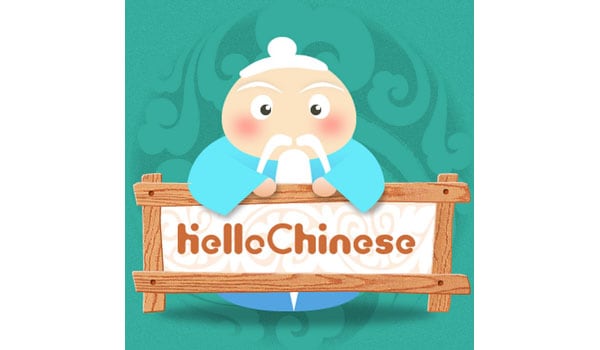
HelloChinese is my favorite of the free apps for learning Chinese. The lessons are organized similarly to apps like ChineseSkill and LingoDeer, but they go into a bit more detail with everything. There are also lots of speaking exercises which I really like, as they force you to take an active role in your learning. This one is really well put together and provides a ton of content.
There are also Premium and Premium+ plans that unlock a bunch of extra features. The Premium plan has lots of mini-games that can help you to practice what you’ve learned in the free lessons. The Premium+ plan is similar to a podcast in many ways, but with some additional exercises.
See our Super-Detailed HelloChinese Review
Best for Writing Feedback
italki

It can be hard to find good places to get feedback on your writing. Most apps don’t offer any chance for feedback, and those that do frankly don’t often do a very good job.
italki, better-known as a place to find an online language tutor, has a community feature called Exercise that makes a great solution for getting writing feedback. The feature allows users to publish a piece of writing in their target language on any subject they wish. Other users can then freely offer corrections and feedback. This tool is free to use! You can also help other users out by providing feedback on writing done in your native language. Right now get a $10 credit with your first purchase.
See our Super-Detailed italki Review
Best Immersion Approach App
Yabla
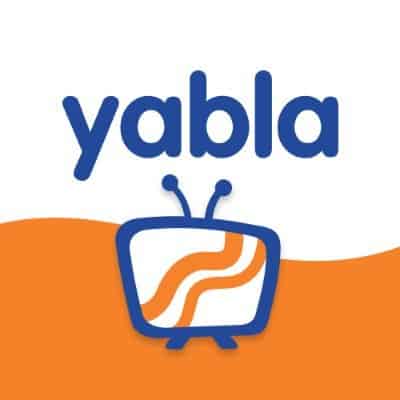
Yabla is a language-learning platform that uses videos with interactive subtitles and language games to help users learn a language. It’s currently available on the web and for iOS, with an Android app in development. Its videos are of varying difficulty levels and types, and are either sourced from the internet or originally produced, but all videos use native speakers.
See our Super-Detailed Yabla Review
Apps to Learn Mandarin Chinese Reading and Listening
Reading and listening to Chinese learning material is essential if you want to improve your overall understanding of the language. We’ve listed a few of these resources that can help you improve these skills.
Best for Learning Chinese Characters
Outlier Linguistics

Outlier Linguistics is amazing if you want to really geek out about Chinese characters and learn everything you can about them — their components, origins, evolution, and more. These dictionaries are available as an add-on in the Pleco app and available in both Simplified or Traditional characters.
Aside from the fact that this stuff is downright interesting, learning more about how characters are constructed and how they’ve changed over time can make them more meaningful, and therefore, easier to remember.
Save 20% by using the coupon code ‘ALR20‘
Best for Reading About Current Events
The Chairman’s Bao

The Chairman’s Bao has an incredible amount of reading content and is one of my favorites. It’s an online graded newspaper with new articles covering current events published daily. It also boasts video lessons for lower-level learners and lessons on historical folk tales and legends.
Reading news stories on TCB feels less like studying and more like something I would do for fun. With so much of the content being China-centric, you’ll learn a ton about the culture as well. For additional practice, there are reading and listening comprehension exercises with each article.
You can get 10% off all individual subscriptions by using the coupon code “alr10”.
See our Super-Detailed The Chairman’s Bao Review
Best Interactive Reading Practice
WordSwing
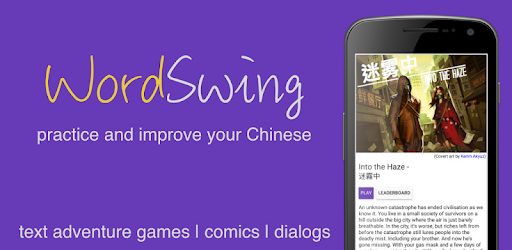
Wordswing is a mixture between a graded reader and a choose your own adventure game. As you read through the stories, you’ll have to make choices that will affect how the story unfolds. It’s one of the only resources that really forces you to actively use the language while reading, which is cool.
They mainly target intermediate and higher-level students who are advanced beyond most graded readers but not quite ready for native materials. There are several different stories that you can try out for free, and more are being added.
See our Super-Detailed WordSwing Review
M Mandarin

M Mandarin uses engaging comics to teach the language, making reading and listening to Chinese more fun. There are a number of other features as well, such as grammar and cultural explanations.
Best Audio Lessons in a Podcast Format
ChinesePod
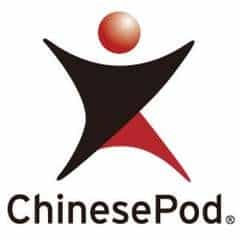
ChinesePod is one of the biggest names in the industry, recommended by nearly everyone, and remaining a solid option for over a decade. They have a massive library of lessons across all difficulty levels that make for a great way to improve your listening skills.
Material at higher levels is taught entirely in Chinese, and an appropriate amount of English is used at the lower levels. Though this scales well, the lessons don’t necessarily build on each other intentionally. Following along with a textbook or another course will help make sure you don’t end up with gaps in your knowledge.
You can get $50 off an annual Premium subscription to ChinesePod by using the coupon code “ALLLANG50”.
See our Super-Detailed ChinesePod Review
Apps for Mandarin Chinese Speaking and Writing
The apps in this section will help you improve your articulation and pronunciation of Chinese words and help you understand Chinese word and sentence structure. They’ll guide you on how to write Chinese characters, words and eventually sentences.
Best for Learning to Write Chinese Characters
Skritter
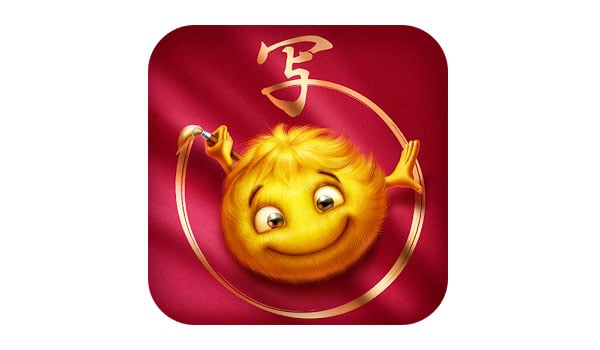
Skritter is perfect for those who are serious about learning to write Chinese characters. It teaches by having you write characters with your finger on your phone’s touch screen. The app uses this technique along with a combination of SRS flashcards and stroke recognition to help you remember how to write each character.
It’s convenient to use and really is effective, but it’s also on the more expensive side of things.
See our Super-Detailed Skritter Review
Tofu Learn

For those who feel like Skritter isn’t worth the cost, TOFU Learn may be just what you’re looking for. It’s free and could make a suitable alternative for improving your vocabulary and helping you learn to write Chinese characters.
Best for Pronunciation Feedback
Speechling
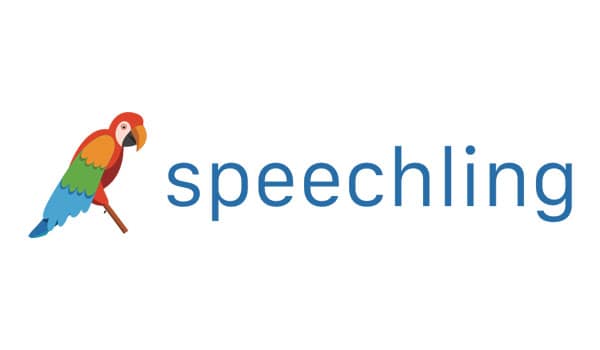
Speechling is a great way to get lots of practice mimicking native speakers. This can do wonders in helping you improve your speaking cadence, confidence, and pronunciation. It involves hearing a recording and then recording yourself saying the same sentence.
Hearing yourself alongside a native speaker is an effective way to point out the differences and room for improvement. It’s also one of the only resources that allows you to choose between hearing a male or female voice. You can do all of this for free!
Subscribers will be able to submit an unlimited number of recordings to be graded by a native speaker, helping you to identify pronunciation mistakes.
You can get 10% off a subscription to Speechling by using the promo code “ALR123”.
See our Super-Detailed Speechling Review
Learn Mandarin Chinese Vocabulary with Apps
It’s no surprise that Chinese, being as widely spoken as it is, has quite the vocabulary. As a Chinese language learner, you should strive to always learn new vocabulary and practice them regularly. We have listed some very efficient apps to help expand your vocabulary.
Best Dictionary App
Pleco
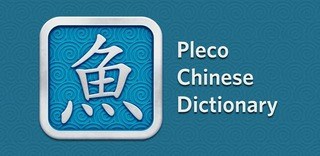
This might be the most popular app amongst learners of Chinese, and it’s more than just a dictionary.
It’s a great dictionary, sure, but there are also loads of extra features. Learn character stroke orders, see example sentences, use the handwriting recognition tool, and listen to audio recordings of over 34,000 words by two native Mandarin speakers. There’s a reason this app is recommended so frequently.
If you choose to only download one app – make it this one.
Best for Learning Words in Context
Clozemaster

Clozemaster is a popular app that is excellent for getting exposure to lots of different sentences and vocabulary. This app uses fill-in-the-blank exercises in which you can type in your answer or choose from multiple choices.
You can filter sentences based on HSK level and you’ll earn points for answering questions correctly. This plays into the app’s arcade-like theme, making it all feel somewhat like a game. Although there is a pro version that requires a subscription, most people will find the free version to offer plenty of value.
See our Super-Detailed Clozemaster Review
Best Customizable Study Tool
Anki

Anki is the best memorization tool out there when it comes to customization. It’s a simple yet powerful tool that uses an SRS algorithm to help users memorize whatever they want.
Customization options include the ability to add images, audio, sentences, explanations, tags, and more. There is a bit of a learning curve when first getting started, but those that don’t want to spend the time creating their own materials can check out the pre-made Chinese decks. The app is free on Android, $25 in the Apple App Store.
Best for Grammar Practice
Chinese Grammar

This app comes from the makers of Ninchanese and is purpose-built to teach grammar. It features over 130 grammar lessons, which can be sorted from HSK1 to HSK5. Each lesson comes with very detailed explanations and lots of examples.
It’s free to use, and the only ads you’ll see are unobtrusive and for their course. It’s definitely the best app for Chinese grammar that I’ve seen.
Tutors and Mandarin Chinese Language Exchange Apps
If you prefer learning with the help of a tutor or through language exchange with a native Chinese speaker, then these resources are for you. Check them out and find which one is best for you.
Best for Finding an Affordable Tutor
italki

italki is the most affordable and convenient place to find an online Chinese teacher — or any other language for that matter. There are a huge number of options to choose from, making it easy to find someone who fits your schedule, goals, learning style, and budget. You may be surprised by just how many good tutors are available for less than $10/hour.
While italki is predominantly made for tutoring, you can also use it to easily find a language exchange partner to talk with for free or get writing feedback with the Exercise feature on the app. Right now get a $10 credit with your first purchase.
See our Super-Detailed italki Review
Preply

Another online tutor directory, Preply as a huge library of tutors teaching all kinds of subjects. Prices are quite low, but consider that teachers make small commissions and aren’t paid for teaching trial lessons.
Exclusive 50% discount for ALR readers! Make sure to use our link to receive it.
See our Super-Detailed Preply Review
Best for Language Exchange
HelloTalk

Practicing with native Chinese speakers is certainly one of the fastest ways to make serious progress in the language, and HelloTalk makes it super easy to find language partners.
HelloTalk is social in nature, connecting users with tons of potential language partners and allowing them to chat, send voice messages, or even have phone conversations. They also include built-in language tools to make communication easier. You can use the in-app translation tool and the correction tool to make the language exchange experience much more efficient.
HelloTalk offers a limited number of translations for free each day and when it comes to aesthetic, the app is lighthearted and cartoony.
See our Super-Detailed HelloTalk Review
Tandem
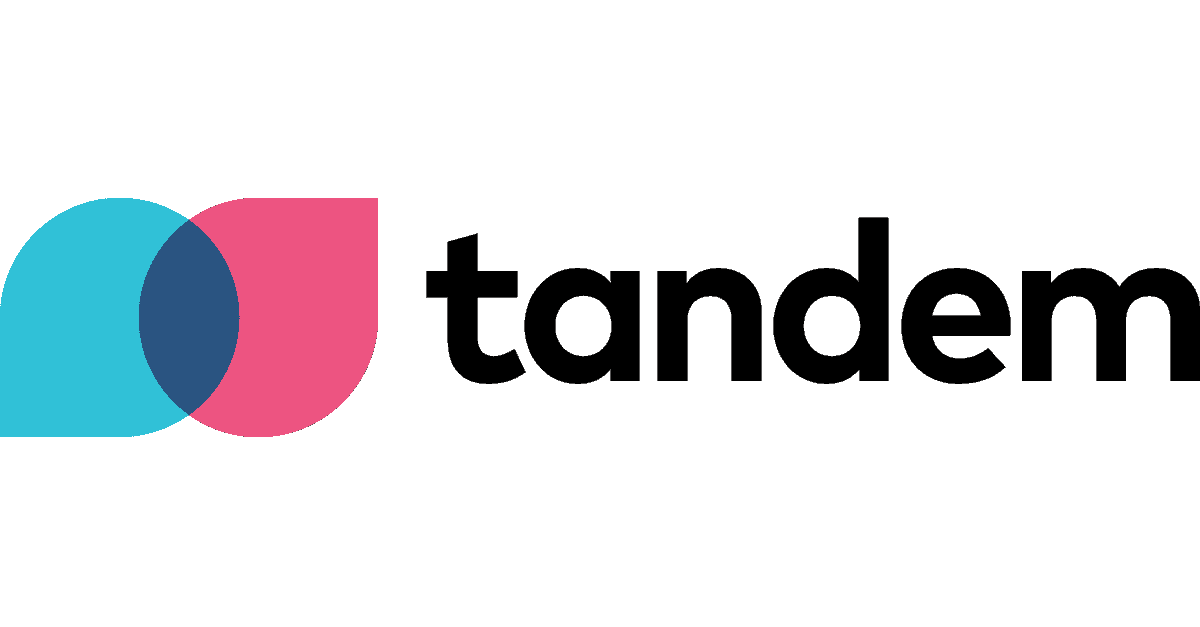
Like HelloTalk, Tandem connects language learners with native speakers, which makes finding language partners a breeze.
Tandem links users with several potential language exchange partners to talk to either by chat, voice message, or phone calls. They have in-app translation and correction tools, which make communication and the language exchange experience easier and more efficient although the number of free translations is limited per day.
The app is sleek and refined when it comes to aesthetics.
See our Super-Detailed Tandem Review
Best Q&A App
HiNative

HiNative is a resource that connects language learners with native speakers of their target language. It’s perfect for getting answers to quick questions that you may not be able to look up in a book or search the internet for.
It works by allowing users to post questions for native speakers to answer. There are pre-made question forms to help you formulate your question, and receiving an answer usually happens very quickly. You can pay it forward by answering questions of those learning your native language. Basic functionality is free, some additional features require a subscription.
See our Super-Detailed HiNative Review
Maybe Try These Mandarin Chinese Learning Apps
Here are some more options that are commonly recommended, but didn’t make our favorites list. Some of them could make good options for learning Chinese.
Busuu
Busuu is one of the more popular courses out there, but its Chinese course is riddled with errors and not very well done.
See our Super-Detailed Busuu Review
Fluenz
The Fluenz course is pretty good for some languages, but it falls short with Chinese. It completely ignores Chinese characters and has a price tag.
See our Super-Detailed Fluenz Review
Lingodeer
Providing topical lessons and a light gamification element, Lingodeer is one of the better options in its class. It’s a great way to start out with a number of languages, including Chinese.
See our Super-Detailed Lingodeer Review
Rocket Languages
Despite audio lessons that offer good explanations and chances to engage, Rocket Chinese just isn’t that good. The exercises quickly become repetitive, and some of the lessons aren’t very well planned out.
See our Super-Detailed Rocket Languages Review
Rosetta Stone Mandarin Chinese
Rosetta Stone is one of the most well-known resources for learning languages. It takes an immersive approach to teaching and is widely used by corporations and individuals alike. High levels of repetition and an absence of translations or explanations are hallmarks of the course. Rosetta Stone course could be most suitable for learners whoˇ don’t mind repetitive exercises and prefer to learn from pictures and context rather than translations and explanations. It’s probably not a good option for anyone wanting to significantly improve their speaking or writing skills, or those looking for an engaging course.
ALR Readers Exclusive Holiday Deal!! Get the Lifetime Subscription for 25 languages for $179 (everywhere else it’s $199 right now!). See details on the website.
See our Super-Detailed Rosetta Stone Mandarin Chinese Review
Super Chinese
Like some other apps, Super Chinese offers gamified lessons available on your smartphone. It’s an affordable and enjoyable way to get started with Chinese. Save 15% with the coupon code ‘alr15’.
See our Super-Detailed Super Chinese Review
Transparent Language
You’ll probably want to stay away from this one. It has users memorize words and phrases in isolation and has a weak teaching methodology.
See our Super-Detailed Transparent Language Review
edX
edX is an online learning platform that provides free access to university courses. Just like Coursera, there are also Chinese language courses and courses on other subjects taught in Chinese. Upon completion of a course, learners have the option to pay for a certificate.
Udemy
Anyone can create a course and sell it on Udemy. This means there is a huge variety of courses, both for beginners and higher levels. Quality may vary, but keep your eye out for sales (they’re frequent) if you see a course that interests you.
Best Free(mium) Apps for Learning Mandarin Chinese
Maybe you’d like to learn Chinese but you’re on a budget. Don’t worry, we have a list for that as well. Take a look at our Bargain Basement section and take your pick.
Best Beginner Fun Game App (not for serious learners)
Duolingo Chinese
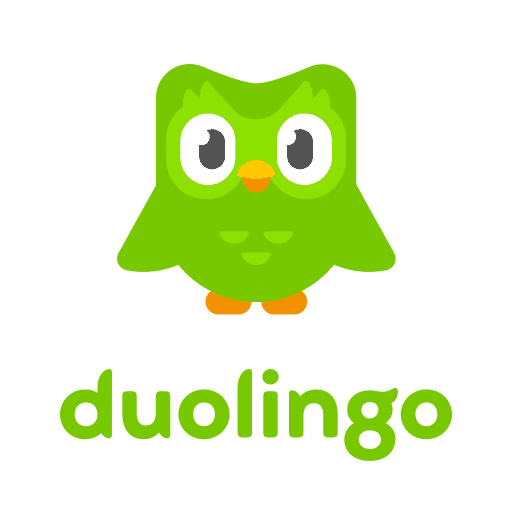
Similar to Lingodeer, Duolingo uses short activities and gamification to make language learning incredibly accessible. It’s free and super popular, but it doesn’t do Asian languages very well.
See our Super-Detailed Duolingo Chinese Review
Best Easy-to-Use Way to Learn Vocabulary
Memrise

Memrise is a resource with a massive amount of learning content. The app uses spaced repetition (SRS) flashcards, meaning super-efficient practice, and features tons of free user-created courses.
The official Memrise courses have the added bonus of reliable quality audio, some videos, and pictures. Some user-created courses also have these features, but it can be hit or miss.
As an additional bonus, the app is particularly well designed and fun to use. The short activities also make it one of the more convenient practice options out there. Of course, you won’t get extensive or deep language practice for free, but it’s a solid option for vocabulary practice.
See our Super-Detailed Memrise Review
Best Simple Premade SRS Flashcards
ChineseSkill
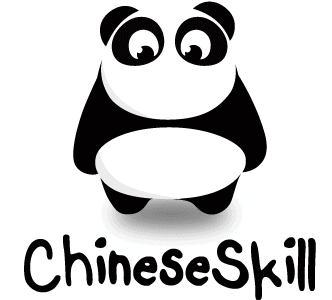
Another gamified app offering convenient practice, ChineseSkill is free and offers solid introductory material. It’s quite similar to both Lingodeer and HelloChinese.
See our Super-Detailed ChineseSkill Review
Many Free Mandarin Chinese Lessons
Coursera

Coursera is an online platform that offers access to university courses for free. There are Chinese language courses and courses on other subjects taught in Chinese. They offer certification upon completion for those that are willing to pay.
So, What is the Best App for YOU to Learn Mandarin Chinese?
It’s evident from this list that there are apps that touch on just about every aspect of learning Mandarin Chinese. These apps can be extremely helpful in the long run, but they’re often best used in conjunction with other study methods.
To find more great resources for learning Chinese, check out our list of best online Chinese courses, the best podcasts for learning Chinese, and our list of Mandarin Chinese Youtube channels. Get a better understanding of what makes a good Chinese learning program and make a more informed decision of which app will be worth your while.
Although we’ve listed quite a lot of apps to learn Mandarin Chinese, there are probably some quality apps that we don’t know about or forgot to mention here. If you have any suggestions for something we missed, let us know!


SuperChinese is a good app for learning. They have structured lessons, each lesson includes four sections – Vocabulary, Grammar, Text and Test. The words and grammar learnt in first two sections is used in Story/essay based text and then there is a timed test. I am using this app to learn Mandarin and love it!
Yea, Lang-8 was great but for some reason, they stopped accepting new user registrations.
Lang-8 is a great platform for original written material in any language, where you give and get feedback and corrections.
Thanks for the suggestion. I wasn’t a big fan of the book but haven’t tried the app yet.
Chineasy for learning characters?
Awesome. Thanks for sharing. I’ll have to check that out. I’ve used ximalaya FM (喜马拉雅 FM) in the past and found it to be really good. Though, I really haven’t spent as much time exploring the different features and sections of it as I should. There’s just so much content to choose from. I’ll have to update this list to include both of these and a couple other apps I realised I’d forgotten about.
You mentioned all of the good ones. The only one I would add is Qing Ting FM (蜻蜓FM). It’s not a learning app but a radio app geared towards native speakers. Once you get to a certain level, you can get a lot of benefit out listening to children’s 儿童 shows, and I use it everyday to listen to Peppa Pig (which is a nice compliment to the bona fide Peppa Pig episodes on YouTube.)
There are also some text-heavy games that have been translated into Mandarin, such as To The Moon, the Lifeline series, and I think some of the Final Fantasies.
Pingback: Mandarin Weekly #128 – Mandarin Weekly (每周中文)